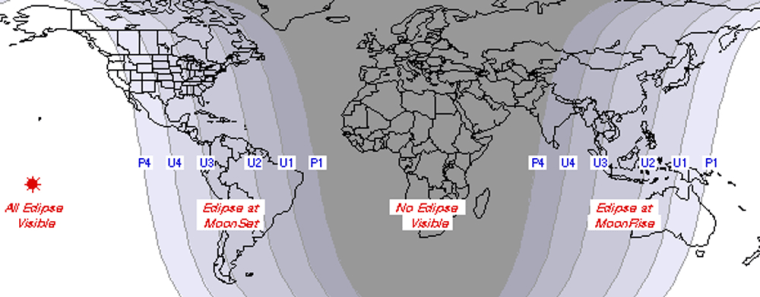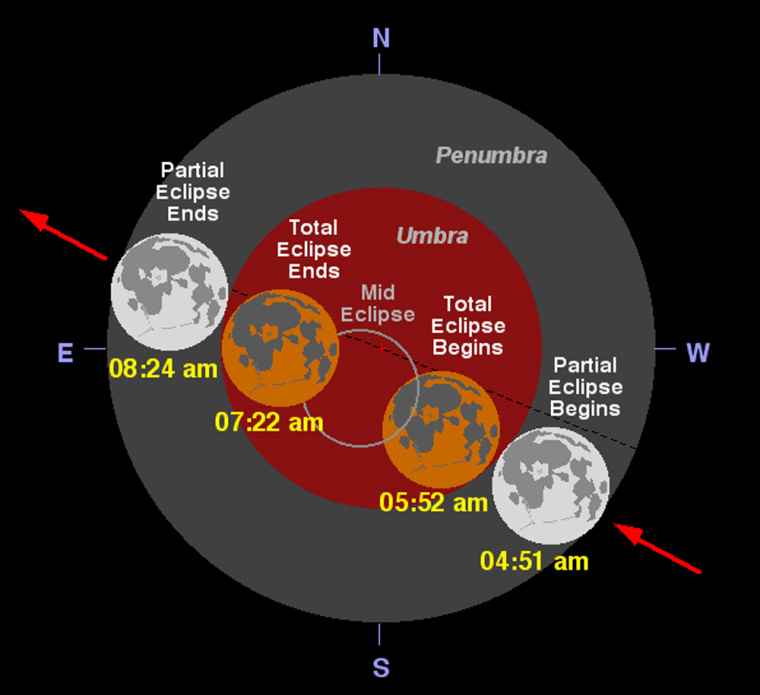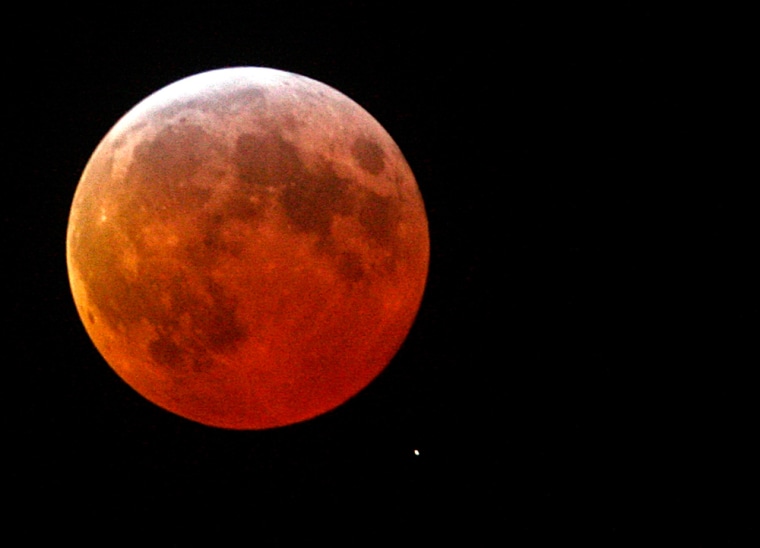Tuesday morning, Aug. 28 brings us the second total lunar eclipse of 2007. Those living in the Western Hemisphere and eastern Asia will be able to partake in at least some of this sky show.
The very best viewing region for viewing this eclipse will fall across the Pacific Rim, including the West Coast of the United States and Canada, as well as Alaska, Hawaii, New Zealand and eastern Australia. All these places will be able to see the complete eclipse from start to finish.
Europeans will miss out on the entire show, as the moon will be below the horizon during their mid and late morning hours.
What to look for
The eclipse will begin when the moon enters the faint outer portion, or penumbra, of the Earth's shadow about an hour before it begins moving into the umbra. The penumbra, however, is all but invisible to the eye until the moon becomes deeply immersed in it. Look for a slight hint of shading or smudginess on the eastern (left) edge of the lunar disk about 40 minutes after the moon first enters the penumbral shadow.
The most obvious part of the eclipse will be when the moon is passing through the dark umbral shadow of the Earth. On this occasion, the full moon will track just to the south of the center of the Earth's umbra; deep path almost through the center of the umbra which will result in a total phase lasting an unusually long 1 hour 30 minutes (the maximum possible is 1 hour 47 minutes).
Because some of the sunlight striking our planet is diffused and scattered by our atmosphere, the Earth's shadow is not entirely dark. Enough of this light reaches the moon to give it a faint orange or reddish glow even when it's totally eclipsed.
At greatest eclipse the moon's southern limb will pass 1,039 miles (1,672 km.) from the outer edge of the dark shadow. This should produce a relatively dark eclipse, with the moon glowing a dull coppery color along its lower portion and a deep brown or gray over its upper portion. Space.com encourages viewers to estimate the Danjon value — a five-point scale of lunar luminosity ("L") to classify eclipses — at mid-totality.
Timetable
The beginning and ending of a lunar eclipse happens simultaneously for every viewer, unlike an eclipse of the Sun. Hence the simple schedule below holds for all places:
Where you can see it
As for the region of visibility for this eclipse, it pretty much is the "flip side" of the last eclipse, in March: Whereas Africa, Europe and western Asia had ringside seats for that late-winter spectacle, this time they are completely out of luck. The timing of the eclipse comes during their late morning and early afternoon hours, with the eclipsed moon below the horizon.
Conversely, almost the entire Pacific Ocean is turned toward the moon during this August eclipse. In fact, at mid-totality the moon will appear directly overhead for a spot over the open waters of the Pacific, roughly 1,800 miles (2,900 km.) south of Hawaii.

And whereas, for the March lunar eclipse those near and along the Pacific Rim could catch a brief view at dawn, while the Americas view coincided with moonrise, in August we are presented with the converse of these circumstances. For the eclipse will already be underway at moonrise for Japan and much of Australia on the evening of Aug. 28.
The rest of eastern Asia will either have the moon rise during totality, or will see it as it is exiting the Earth's shadow.
But from North America, the eclipse occurs during the early morning hours of Aug. 28.
The Canadian Maritimes will miss totality, as the moon will set in partial eclipse before it begins.

Across the eastern third of the United States, moonset arrives in the midst of the total phase. So, less than six months after Easterners watched the moon rise during totality, comes the opportunity to be treated to the sight of the moon setting during totality! However, thanks to advancing morning twilight, plus horizon haze, for those living in the Northeastern and Middle Atlantic States it is likely that the dim moon (some 10,000 times fainter than a normal full moon) will more or less vanish from view near or just after the onset of totality.
Over the central states, the moon will set in partial eclipse, while emerging from the umbra; the farther west, the less of the moon so covered. An interesting observation for watchers in this zone who have an unobstructed eastern and western horizon is to attempt seeing the partially eclipsed setting moon and the rising Sun at the same time. The moon will remain above the horizon for a few minutes after sunup.
From the western states, all umbral stages will be visible before moonset affording the best views of totality (in a dark sky) within the contiguous states and more than making up for being completely shut-out of a view of last March's eclipse. And Alaska and Hawaii will see the eclipse happen in the middle of their night. Mid-totality for Anchorage comes at 1:37 a.m. Alaskan Daylight Time and for Honolulu at 12:37 a.m. Hawaii Standard Time.
Coming attraction:
Should clouds interfere with your attempt to view Tuesday's eclipse, you won't have very long to wait for the next opportunity. That will come just under six months from now, on the night of Feb. 20-21. Another total lunar eclipse (the third in less than a year's time) will be visible throughout much of North and South America as well as Europe, Africa and parts of western Asia.
